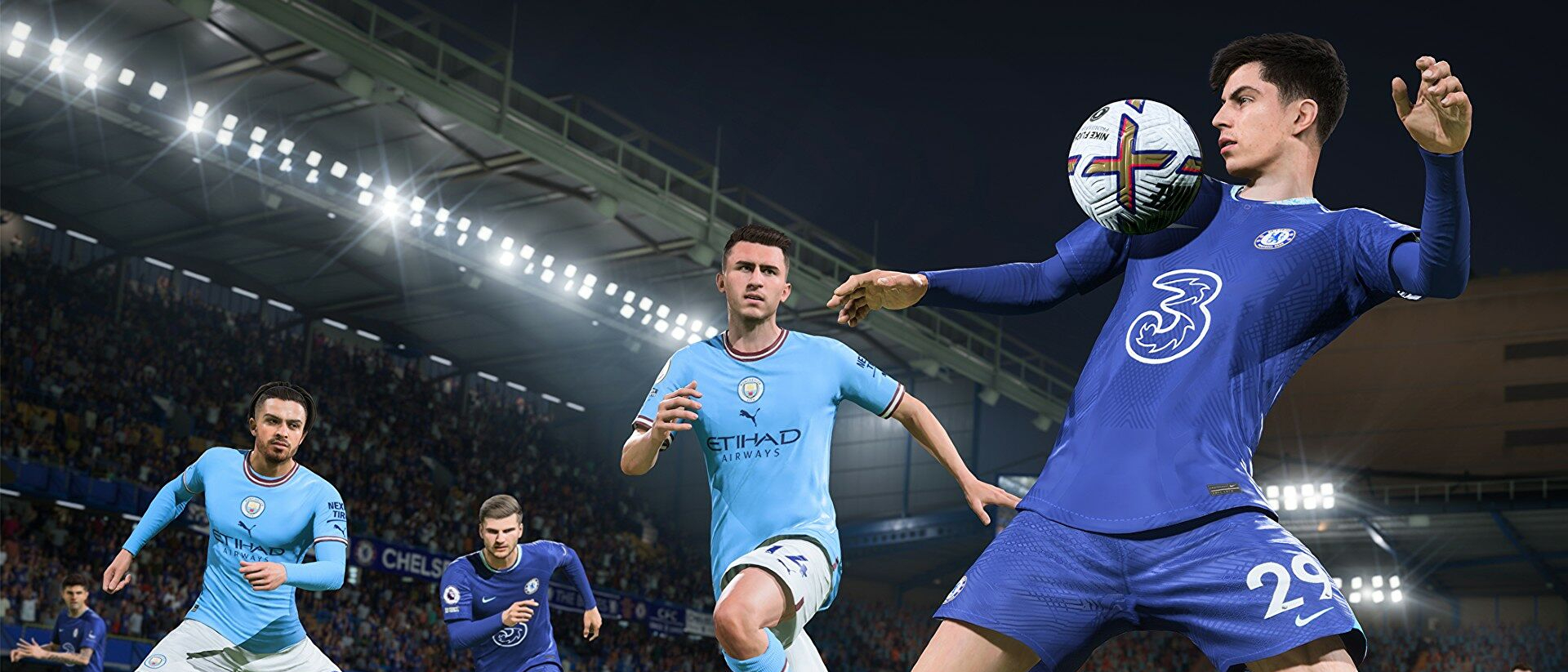TechRadar Verdict
FIFA 23 builds on the current-gen hardware foundations laid by its predecessor to rank as the most authentic and comprehensive soccer simulator ever made. It still can’t escape the gambling-adjacent frustrations that have tainted the FIFA experience for several years now, but the addition of HyperMotion 2 technology and refreshment of long-standing gameplay mechanics ensure FIFA 23 resembles something close to the swansong this decades-old franchise deserves.
Pros
- +
Surprisingly impactful gameplay changes
- +
Eye-popping visuals
- +
Current-generation cross-play
Cons
- -
Ultimate Team is unwieldy
- -
Not all mode enhancements work for the better
Why you can trust TechRadar
No one does incremental change quite like EA Sports. Buoyed by the annually-renewing interest in football the global phenomenon, the much maligned studio has successfully kept its FIFA franchise atop the sports game pile for almost 30 years, despite implementing about as many meaningful changes in that time as Tottenham Hotspur has won trophies.
It’s perhaps for the best, then, that EA has ended its decades-old partnership with the real-world FIFA organization, after the latter reportedly put a $1 billion price tag on the renewal of EA’s naming rights agreement. The virtual franchise will live on – the first of many titles bearing the EA Sports FC moniker looks inevitable in 2023 – but not before the pair signs off with a final co-authored entry for current and past-generation consoles.
Enter FIFA 23, a last hurrah that benefits immensely from the high standards set by its predecessor, but also one that adds enough material improvements to warrant a place among the series’ very best entries.
Keeping it real
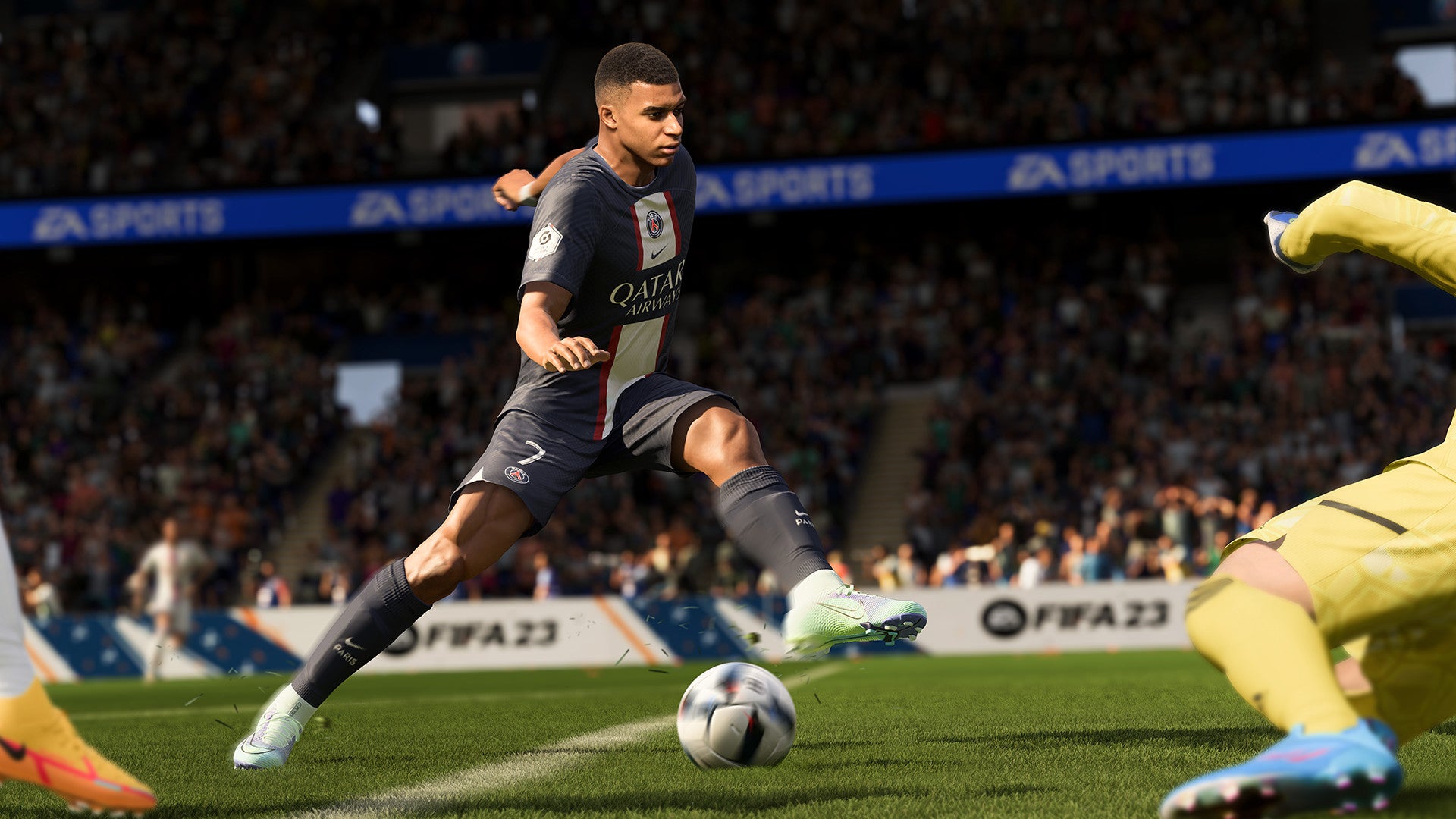
FIFA 23’s headline upgrades are refreshingly mechanical. Leading the way are features that EA describes as Revamped Fundamentals – overhauls to shooting, passing and dribbling systems that endeavor to give you more control over how players behave on the pitch.
Power Shots, for instance, let you add extra power and accuracy to shots at the expense of time, while Extended Crossing Zones offer the option of putting teasing balls into the box from atypical areas of the pitch. All of these so-called fundamental upgrades work effectively – once you’ve had a few matches to learn their quirks, of course – and add yet more variation to FIFA’s already exhaustive suite of attacking options.
FIFA 23 also gives set pieces the respect they deserve. You’re now able to determine – at an almost granular level – how the ball travels to its target from a free kick or corner, making players like Kimmich and James Ward-Prowse (i.e. those with set piece-related attributes) far more valuable than they have been in previous entries.
Every new mechanical feature boasts its own unique set of animations, too. EA invested heavily in recording and learning from real-life football matches to give FIFA 23 the highest possible degree of authenticity, and movements triggered by the likes of Power Shots and Technical Dribbling look borderline photorealistic.
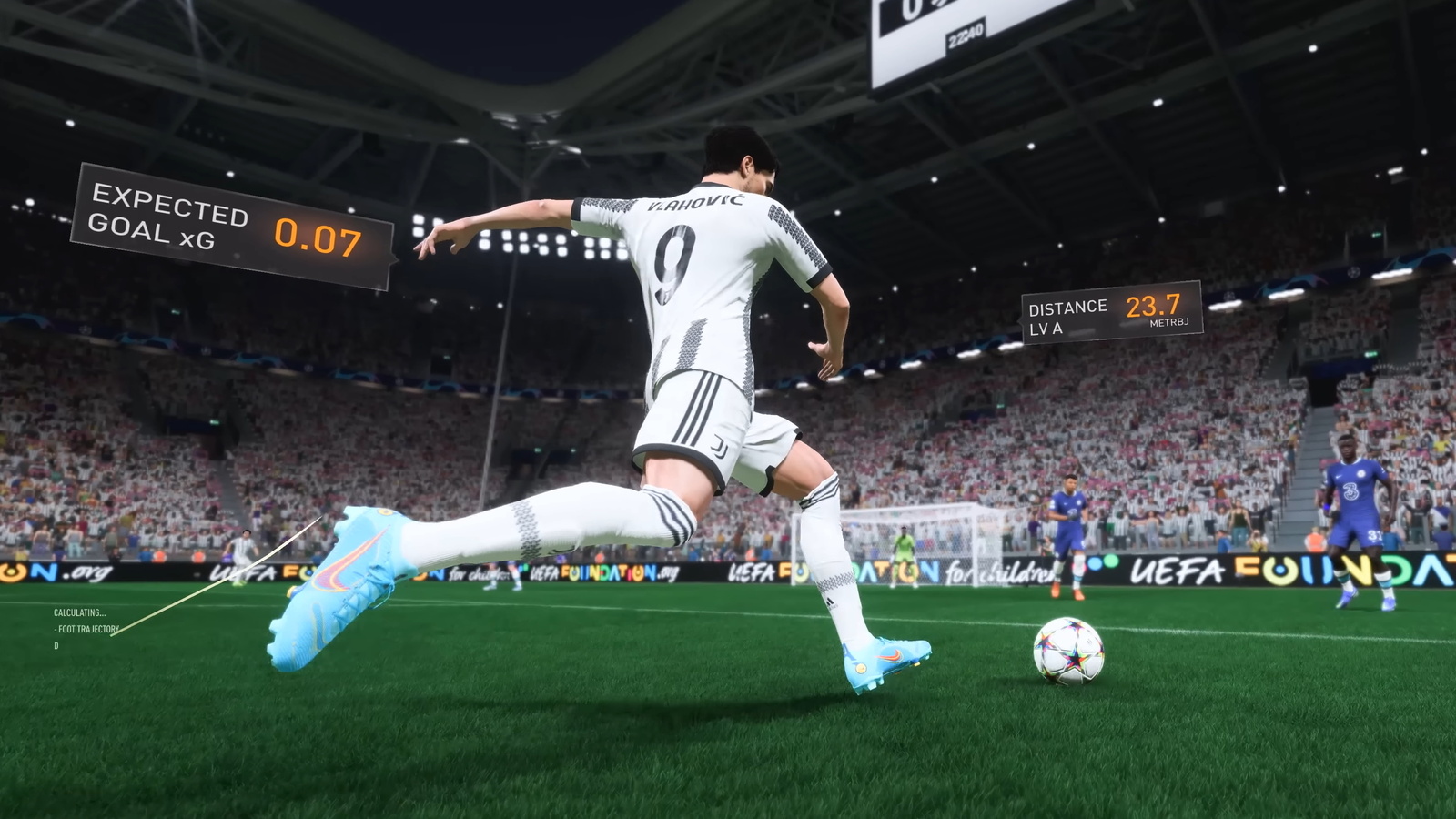
FIFA 22 was the first FIFA in a long time to implement genuine improvements to visuals and gameplay, and FIFA 23’s HyperMotion 2 technology takes these solid foundations one step further in peripheral areas of the pitch. The net now bulges naturally when you score a goal, the pitch gets torn up – and stays torn up – throughout the course of a match, and confetti-laden remnants of crowd celebrations cover the sidelines. Even player hair looks noticeably more convincing than it did in FIFA 22 (Jack Grealish fans, rejoice!).
The only presentation criticism worth leveling at FIFA 23 – on PS5 at least – is its insistence on pumping noises out of the DualSense controller at every opportunity. Having sounds like the referee's whistle and audible net physics blasted in your face in such close proximity becomes very annoying very quickly – though you can, mercifully, turn DualSense audio off in settings.
A mixed bag of tricks

From a modes point of view, FIFA 23 is much the same offering as its predecessor, save for the amalgamation of Volta and Pro Clubs and the welcome addition of women’s club football.
Career mode remains largely unchanged, though a handful of so-called improvements alter – and don’t unanimously enhance – the experience. For instance, you can now pick a real-life manager (or Ted Lasso) to steer your team to glory, but a distinct lack of voice acting makes this decision largely redundant (unless you’re easily entertained by dressing Pep Guardiola in a pink tracksuit and sliders).
There are a host of new transfer animations, too, which initially make the feeling of landing a big-money signing more profound, until they become yet another cutscene to skip (even outgoing players now get their 10 seconds in the spotlight). The same goes for transfer reports that rate your negotiation performance – at first, you’re keen to learn from their criticisms, but they quickly lose their novelty.
The new Play Highlights feature is, however, a neat addition. On top of the options to play, simulate or jump in and out of a match, you’re now given the chance to only enter the fray during the most important moments. If your opponent is on the attack, the game throws you into the action to defend, and does the same if your star midfielder is given the space to play a killer pass. Annoyingly, Play Highlights doesn’t let you make substitutions, and you’re ultimately beholden to the amount of chances the computer generates for you, but it’s still a great time-saver if you’re speeding your way through the season calendar.
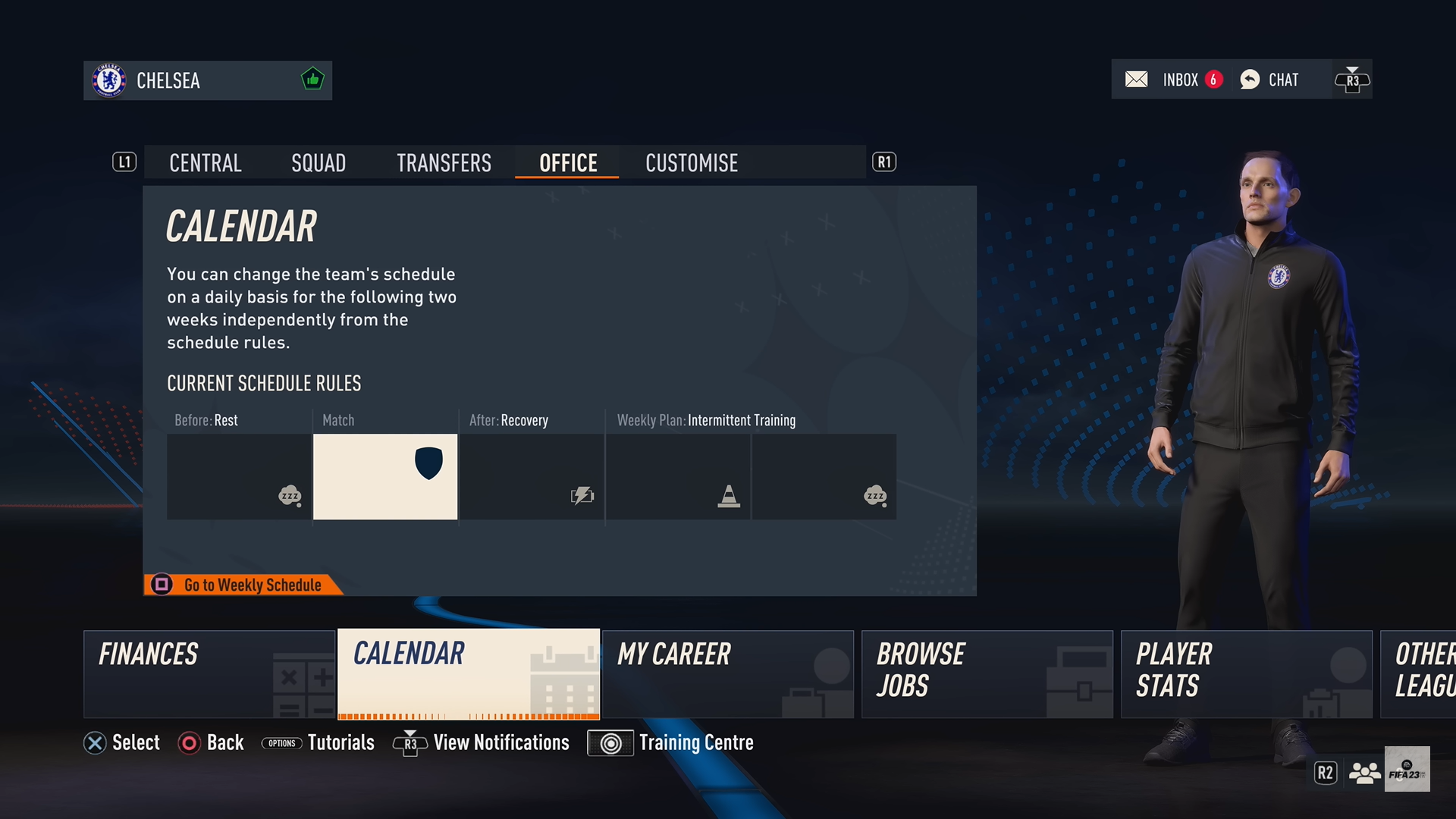
Speaking of which, FIFA 23 also fixes one of my biggest gripes with FIFA 22. You now have the option to bypass (or auto-simulate) training days when advancing through the calendar, which makes the time between matches much, much shorter.
EA has made no such effort to streamline Ultimate Team. FIFA’s flagship card-counting mode is plagued by a seemingly never-ending spate of challenges, customization options, pack animations and a frankly dizzying number of meaningless notifications that make it a chore to navigate. Never has the reward of a new cosmetic item been so unwelcome.
FIFA’s flagship card-counting mode is plagued by a seemingly never-ending spate of challenges, customization options, pack animations and a frankly dizzying number of meaningless notifications.
The chemistry system has been overhauled to allow for greater team-building freedom, but by the time you’ve figured it all out, your eyes may have turned square. Existing FIFA fans will know what to expect (read: tolerate) from Ultimate Team, and the temptation to build a squad full of the world’s best players remains a strong one – but the mode hasn’t been improved in any noticeable way. Microtransaction-phobes, beware.
More positively, FIFA 23 boasts current-generation cross-play straight out of the box, meaning players on Xbox Series X|S, PS5, PC and Google Stadia (RIP) can compete against one another in almost all of its modes. As with FIFA 22, PS4 and Xbox One players can still duke it out, too, while EA has said that “work is being done” to implement cross-generational play in the near future.
The world's game
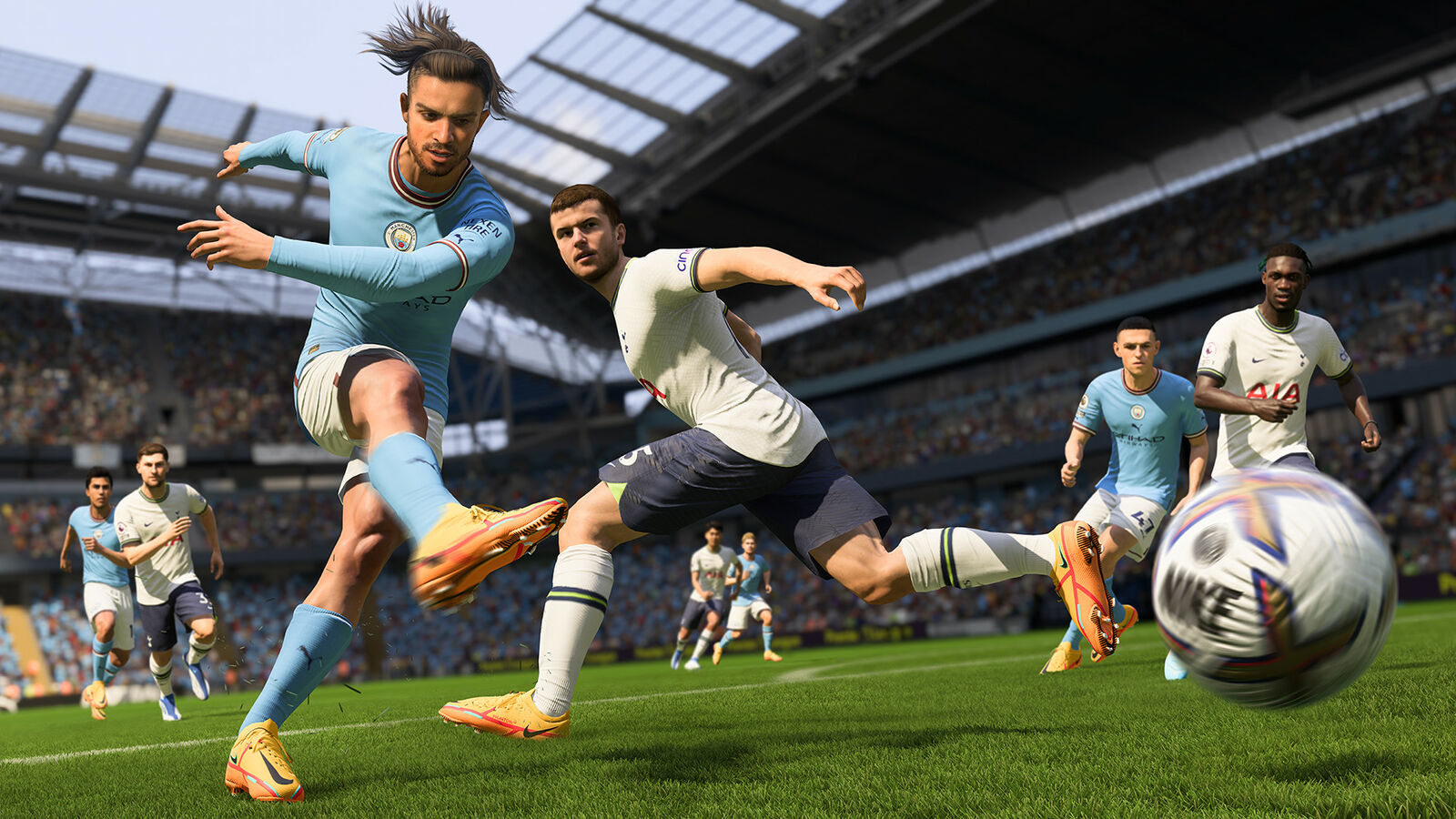
All told, then, FIFA 23 is the most accomplished FIFA title to date. Familiar Ultimate Team issues remain, but EA’s latest simulator looks more life-like than its predecessor and finds even more ways to improve the series’ tried-and-tested gameplay mechanics. If your favorite thing about FIFA is its capacity to simulate the game of football, then FIFA 23 is worth the investment – just don’t expect to find a totally polished experience behind every menu.

Axel is TechRadar's UK-based Phones Editor, reporting on everything from the latest Apple developments to newest AI breakthroughs as part of the site's Mobile Computing vertical. Having previously written for publications including Esquire and FourFourTwo, Axel is well-versed in the applications of technology beyond the desktop, and his coverage extends from general reporting and analysis to in-depth interviews and opinion. Axel studied for a degree in English Literature at the University of Warwick before joining TechRadar in 2020, where he then earned an NCTJ qualification as part of the company’s inaugural digital training scheme.
